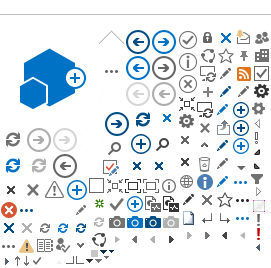|
|
 SPACE INTERNETWORKING SERVICES AREA SPACE INTERNETWORKING SERVICES AREA | The objective of the SIS area is to address the communications services and protocols supporting end-to-end communications among applications, particularly where those communications may span multiple heterogeneous physical and data link technologies. Areas addressed by SIS include the networking infrastructure to support application-to-application communication onboard a single spacecraft, communications among multiple spacecraft, and communications between space-based applications and their counterparts on Earth and/or other planetary bodies. Specifically, note that the Service Catalog 2 of the Interagency Operations Advisory Group (IOAG) "identifies the cross-support service types that should be provided by the ground tracking assets operated by the IOAG member agencies participating in the Solar System Internetworking (SSI) based on DTN [Delay-Tolerant Networking] and / or IP [Internet Protocol] technologies." The SIS area focuses on these service types and related services. As such, the SIS area deals with communication services and protocols that are independent of specific link technology (as a lower layer bound) and independent of application-specific semantics (as an upper bound). Thus the SIS area covers essentially the Network through Transport Layers of the OSI reference model. The SIS area also develops application support protocols where the services provided are intended to operate over an internetworked infrastructure. An example of such an application support protocol is the Asynchronous Messaging Service (AMS), which is intended to be invoked by applications to effect message exchange. The Bundle Protocol, a central element of DTN, uses the underlying communication and infrastructure services provided by the SLS and SOIS areas and any other onboard networks, and provides the networked connectivity needed by applications developed in other CCSDS areas such as MOIMS and SOIS. This enables the SIS services to provide hardware-independent mechanisms for identifying end systems and to provide communications services that allow users to operate the same way whether communication is over a single data link layer or over multiple hops. The suite of capabilities developed by the SIS area, centered on the DTN architecture, accommodates all ranges of delay, interactivity, and directionality, although not all protocols are appropriate for all environments.
The
SIS area needs to coordinate the following:
- SIS security mechanisms need to be consistent with other security mechanisms at other layers in the stack, such as those deployed at the link layer.
- The MOIMS area is developing Mission Operations data and services that might, depending on mission design choices, need to be deployed over SIS infrastructure. SIS needs to coordinate with MOIMS to ensure that such missions can efficiently use MOIMS data and services over SIS internetworks.
- The internetworking technologies developed by SIS need to be managed during operations. Since the deployed internetworks will typically span agency boundaries, the management mechanisms need to be coordinated with CSS for ground station interfaces and with MOIMS for application-level services required for operations, in particular for network management.
- The SOIS area is advocating for the use of wireless technologies for both onboard and inter-spacecraft communication. SIS needs to coordinate with SOIS and provide protocols that support internetworked communication over a mix of wireless technologies and/or heterogeneous wireless/wired scenarios.
- SOIS also develops a set of onboard services that SIS can leverage (e.g. file and packet storage services). SIS needs to coordinate with SOIS to ensure that SIS requirements are reflected in the SOIS designs.
- SIS coordinates the internetworking mechanisms it develops, where reasonable, with similar mechanisms and capabilities defined for use with the terrestrial Internet, and in particular defined by the Internet Engineering Task Force (IETF) and Internet Research Task Force (IRTF). This coordination is nominally achieved by operating the Bundle Protocol over the terrestrial Internet, and other networks based on the Internet architecture, as if these networks were underlying link services. By coordinating with these terrestrial standards in this way, SIS ensures that CCSDS' needs are addressed in the terrestrial standards and that the terrestrial protocols can be made to interoperate with the CCSDS versions. This will allow CCSDS to, for example, leverage commercially-available implementations of Bundle Protocol routers on the ground.
|
 SIS GOAL 1: Terrestrial IP Suite for CCSDS SIS GOAL 1: Terrestrial IP Suite for CCSDS |
Promote
the use of Internet standards for data transport, routing, and auxiliary
functions in environments where end-to-end connections exist and are generally stable. Where round-trip times are relatively brief,
i.e., where signal propagation latencies are small and end-to-end paths are generally
continuous and bidirectional, Transmission Control Protocol (TCP) (including
options defined by CCSDS and/or the Internet Engineering Task Force [IETF]) may
be used. User Datagram Protocol (UDP) may
be considered for unidirectional paths and/or high delay paths. |
 SIS GOAL 2: Solar System Internet SIS GOAL 2: Solar System Internet |
Develop
a Solar System Internet (SSI) suite of protocols and procedures, based on the
Delay-Tolerant Networking architecture, to enable cross-supported
internetworked data communications under policy control of the asset (e.g.,
spacecraft) managers. The DTN protocols
function effectively in environments characterized by long round-trip latencies
(measured in minutes to weeks) whether those latencies are due to high signal
propagation delay, are due to either scheduled or unscheduled lapses in end-to-end connectivity, or both. They
can additionally be used in environments characterized by predictably brief
round-trip times without unacceptable impact on communication performance.
|
 SIS GOAL 3: Application Support Protocols SIS GOAL 3: Application Support Protocols |
Develop
application support protocols to facilitate internetworked mission operations
that are capable of running over either internetworked (IP suite or DTN suite) facilities
or over single-hop mechanisms such as the Encapsulation Service and the
Licklider Transmission Service.
|
|
|


